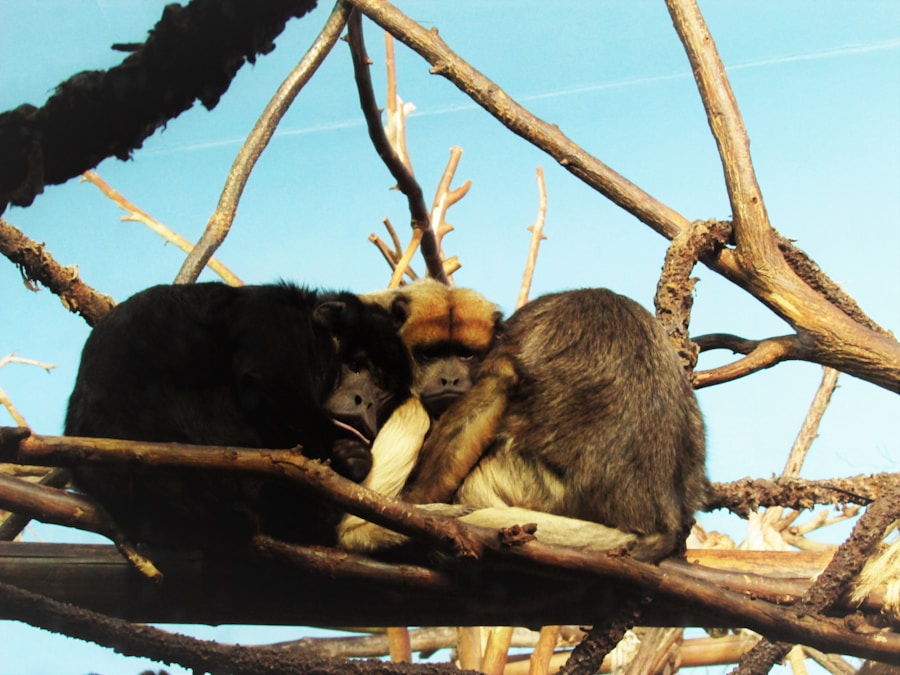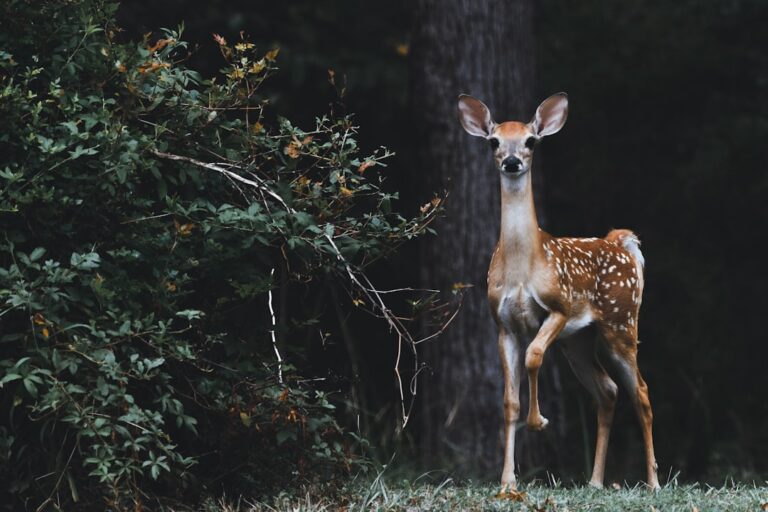Chimpanzees (Pan troglodytes) exhibit a remarkably intricate social structure that is characterized by a blend of matriarchal and patriarchal elements. Their societies are typically organized into communities that can range from 20 to over 100 individuals, with a clear hierarchy that influences social interactions, mating opportunities, and resource access. Within these communities, relationships are often defined by a network of alliances, friendships, and rivalries.
Dominance hierarchies play a crucial role in determining the social standing of individuals, with alpha males often commanding the highest status. However, females also wield significant influence, particularly in terms of nurturing and rearing offspring, which can affect their social standing and mating opportunities. The social dynamics among chimpanzees are further complicated by their use of grooming as a social tool.
Grooming serves not only to maintain hygiene but also to reinforce social bonds and establish alliances. This behavior is particularly important for females, who may groom higher-ranking males to secure protection and access to resources. The intricate web of relationships within chimpanzee communities highlights the importance of social intelligence in their interactions.
Chimpanzees are known for their ability to navigate these complex social landscapes, employing strategies that can enhance their status and reproductive success. The interplay of cooperation and competition within these groups underscores the evolutionary pressures that shape their social structures.
Key Takeaways
- Chimpanzees have a complex social structure with dominant and subordinate individuals.
- Dominance plays a significant role in chimpanzee mating, with dominant males having greater mating success.
- Courtship and mating behaviors in chimpanzees involve displays of power, aggression, and submission.
- Female mate choice and reproductive success are influenced by factors such as male dominance and genetic quality.
- Male competition and strategies for mating success include forming alliances and using aggression to gain access to females.
The Role of Dominance in Chimpanzee Mating
Dominance plays a pivotal role in the mating strategies of chimpanzees, influencing both male and female behaviors during the reproductive process. In many cases, higher-ranking males enjoy preferential access to mating opportunities, as females often choose mates based on their social status. This preference for dominant males can be attributed to the perception that they possess superior genes and can provide better protection and resources for potential offspring.
Consequently, the alpha male often has the most mating success, but this does not preclude lower-ranking males from engaging in alternative strategies to secure mates. Lower-ranking males may employ various tactics to enhance their chances of mating despite their subordinate status. For instance, they might form coalitions with other males to challenge the alpha or engage in sneaky copulations when the opportunity arises.
These strategies highlight the competitive nature of chimpanzee mating systems, where dominance is not solely determined by physical strength but also by social acumen and strategic thinking. The interplay between dominance and mating success illustrates how social hierarchies can shape reproductive outcomes in chimpanzee communities.
Courtship and Mating Behaviors of Chimpanzees

Courtship among chimpanzees is a multifaceted process that involves a variety of behaviors aimed at attracting potential mates. Males often engage in displays of strength and agility, such as vocalizations, chest-beating, and elaborate movements through the trees, to signal their fitness to females. These displays serve as both a demonstration of physical prowess and an invitation for females to assess their suitability as mates.
Additionally, males may engage in grooming behaviors with females to build rapport and establish a connection that can facilitate mating. Females also exhibit specific behaviors during courtship that signal their receptivity to mating. Estrous females display pronounced sexual swellings, which serve as visual cues to males regarding their fertility status.
This physical signal is accompanied by behavioral changes, such as increased sociability and receptiveness to male advances. The courtship phase is not merely a prelude to mating; it is an essential component of the social fabric that influences pair bonds and reproductive success. The interactions during this period can set the stage for future relationships within the community.
Female Mate Choice and Reproductive Success
| Study | Female Mate Choice Metric | Reproductive Success Metric |
|---|---|---|
| Andersson (1994) | Preference for male plumage color | Number of offspring produced |
| Jennions and Petrie (1997) | Female preference for male courtship display | Survival rate of offspring |
| Wagner et al. (2017) | Female preference for male mating calls | Genetic diversity of offspring |
Female mate choice is a critical factor influencing reproductive success in chimpanzees. Research has shown that females often prefer dominant males due to their perceived genetic advantages and ability to provide resources. However, female choice is not solely based on dominance; factors such as personality traits, social bonds, and past interactions also play significant roles in mate selection.
For instance, females may choose mates with whom they have established friendships or those who have previously demonstrated caregiving behaviors. The implications of female mate choice extend beyond individual preferences; they can shape the genetic diversity and overall health of chimpanzee populations. By selecting mates based on a combination of traits, females contribute to the evolutionary fitness of their offspring.
This selective pressure can lead to the emergence of traits that enhance survival and reproductive success within the community. Furthermore, female choice can influence male behavior, prompting lower-ranking males to adapt their strategies in order to attract mates, thereby fostering a dynamic interplay between selection pressures and social hierarchies.
Male Competition and Strategies for Mating Success
Male competition is a defining feature of chimpanzee mating systems, with various strategies employed to secure reproductive opportunities. Dominant males often engage in direct confrontations with rivals, using displays of aggression or physical strength to assert their status. However, competition is not limited to overt aggression; it also encompasses more subtle tactics such as forming alliances with other males or employing deception to outmaneuver rivals.
For example, lower-ranking males may collaborate with peers to challenge an alpha male or take advantage of moments when the alpha is distracted. In addition to physical confrontations, males may also engage in strategic courtship behaviors that enhance their attractiveness to females. This can include grooming females or providing food resources as a means of courting them.
Such behaviors not only improve their chances of mating but also help establish social bonds that can be advantageous in future encounters. The diversity of male competition strategies reflects the complexity of chimpanzee social dynamics and highlights the importance of adaptability in securing reproductive success.
The Influence of Hormones on Chimpanzee Mating

Hormonal fluctuations play a significant role in shaping the mating behaviors of chimpanzees, influencing both male and female reproductive strategies. In females, estrogen levels rise during estrus, leading to pronounced sexual swellings that signal fertility to potential mates. This hormonal change not only affects physical appearance but also alters behavior, making females more receptive to male advances during this period.
Conversely, progesterone levels increase after mating, which can influence female behavior towards potential mates and offspring care. In males, testosterone levels are closely linked to dominance and mating success. Higher testosterone levels are associated with increased aggression and competitive behaviors, which can enhance a male’s ability to secure mates.
However, elevated testosterone can also lead to increased risk-taking behaviors that may jeopardize long-term social bonds within the community. The interplay between hormones and behavior underscores the biological underpinnings of mating strategies in chimpanzees, illustrating how physiological changes can drive social dynamics and reproductive outcomes.
Infidelity and Promiscuity in Chimpanzee Mating
Infidelity and promiscuity are common features of chimpanzee mating systems, reflecting a complex approach to reproduction that extends beyond monogamous pair bonds. Both males and females engage in extra-pair copulations as a strategy to enhance genetic diversity among offspring or secure additional resources from multiple partners. For females, mating with multiple males can increase the likelihood of producing viable offspring by ensuring genetic variation within their progeny.
Males also benefit from promiscuity; by mating with multiple females, they increase their chances of reproductive success while simultaneously reducing the risk associated with relying solely on one partner for reproduction. This behavior can lead to intense competition among males for access to fertile females during estrus periods. The prevalence of infidelity among chimpanzees highlights the adaptive significance of promiscuity in enhancing reproductive success while navigating the complexities of social relationships within their communities.
The Evolutionary Significance of Chimpanzee Mating Behaviors
The mating behaviors observed in chimpanzees offer valuable insights into the evolutionary pressures that have shaped their social structures and reproductive strategies over time. The combination of dominance hierarchies, female mate choice, male competition, and promiscuity reflects an adaptive response to environmental challenges and social dynamics within communities. These behaviors not only influence individual reproductive success but also contribute to the overall genetic health and diversity of populations.
Understanding chimpanzee mating behaviors provides a window into the evolutionary history shared with humans, as many aspects of their social structures resonate with our own species’ complexities. The study of these behaviors sheds light on the evolutionary significance of cooperation, competition, and mate selection in shaping social bonds and reproductive strategies across primate species. As researchers continue to explore these dynamics, they uncover deeper insights into the evolutionary pathways that have led to the rich tapestry of social interactions observed in both chimpanzees and humans today.












